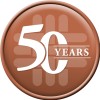
Effect of Prolonged Use of Dronedarone on Recurrence in Patients With Non-paroxysmal Atrial Fibrillation...
Atrial FibrillationRecurrence rate remains high after radiofrequency ablation in patients with non-paroxysmal atrial fibrillation(AF). Prolonged use of anti-arrhythmic drugs (AAD) beyond the post-ablation blanking has been adopted as a solution but without sufficient clinical evidence. Dronedarone is an AAD valid to maintain sinus rhythm and has fewer side effect than other AAD for long-term use.We sought to investigate the effect of prolonged use of dronedarone on recurrence of non-paroxysmal AF patients beyond the post-blanking period within the first year after ablation.

Improving Neurological Outcome for Acute Basilar Artery Occlusion With Sufficient Recanalization...
StrokeIschemicThe potential benefit of intraarterial tenecteplase in acute basilar artery occlusion (BAO) patients with successful reperfusion following endovascular treatment (EVT) has not been studied. The current study aimed to explore the efficacy and safety of intraarterial tenecteplase in acute BAO patients with successful reperfusion after EVT.

A Study of JNJ-79635322 in Participants With Relapsed or Refractory Multiple Myeloma
Relapsed or Refractory Multiple MyelomaThe primary purpose of this study is to identify the recommended phase 2 dose (RP2D[s]) and schedule(s) to be safe for JNJ-79635322 in Part 1 (dose escalation), and to characterize the safety and tolerability of JNJ-79635322 at the RP2D(s) in Part 2 (dose expansion).

Intermittent Pneumatic Compression of the Thigh
Venous Leg UlcerStudy Summary A leg ulcer is a long-lasting (chronic) sore that takes more than two weeks to heal. The majority of leg ulcers are caused either by problems with the veins in the legs; these are called 'venous leg ulcers' (VLU), or a combination of both venous and arterial disease which affects the veins and arteries in the leg; these are called 'mixed aetiology ulcers'(MLU). Venous and mixed aetiology leg ulcers are usually treated by applying a simple non-stick dressing to the ulcer with a firm compression bandage applied on top. These bandages are designed to squeeze the legs and encourage blood flow towards the heart. Before this treatment starts, a patient may undergo tests to check the flow of blood in the leg arteries is adequate. This ensures that compression bandaging can be safely applied to assist wound healing without compromising arterial blood flow. Most venous and mixed aetiology leg ulcers heal within three to four months if they're treated by a healthcare professional trained in compression therapy for leg ulcers. However, some ulcers can be more problematic and may persist for many months or even years despite being treated with the gold standard treatment of compression bandages. We therefore need to find more ways of helping these problematic ulcers to heal. Intermittent Pneumatic Compression (or IPC) is another way of compressing legs to try and improve the circulation. IPC consists of a sleeve or garment which is applied to the leg. The sleeve is connected to a pump which gently inflates and then deflates it to squeeze the leg in a massage like manner. The IPCOTT study aims to find out if a new IPC device, known as the WoundExpress can help to heal leg ulcers. The WoundExpress has a sleeve that patients put around the thigh, like the one applied to the arm when people have their blood pressure taken. Users need to be either sitting with their legs raised or lying down when using the device. Pressing the 'start' button on the pump causes the sleeve to automatically inflate with air for 2 minutes, until it reaches a pressure of 60 mm/Hg (this is low compared to the pressure used when measuring blood pressure; most patients find it very gentle and comfortable). After the 2-minute inflation, the sleeve will automatically deflate for another 2 minutes, where no compression is applied to the thigh. These 4-minute inflation and deflation cycles will repeat whilst the device is in use. People who take part in the study will be randomly allocated to Group A or Group B. Patients in Group A will continue to receive their usual wound care but will also be provided with a WoundExpress device to use for 2 hours per day for a 16-week period. Patients in Group B will continue to receive their standard wound treatment only for the 16-week study period (patients in Group B will be offered the chance to use the WoundExpress device for a 16-week period after the study has ended). All patients taking part in the study will be asked to attend their Wound Clinic for a study review once every two weeks during the study period. At these visits, a research nurse will take measurements and photographs of the ulcer(s) and participants will also be asked some questions about how they have been feeling since using the device. Patients who have been given a WoundExpress device will also be asked to keep a diary recording when they use the device and how they found it. When the study is complete, results will be analyzed to find out if there was any difference in ulcer healing rates between Group A and Group B.

Diuretics Alone vs. Aortix Endovascular Device for Acute Heart Failure
Heart FailureCardiorenal Syndrome9 moreAortix is a circulatory support device for chronic heart failure patients on medical management who have been hospitalized for acute decompensated heart failure (ADHF) and are resistant to diuretic therapy. Eligible ADHF patients with diuretic resistance (irrespective of ejection fraction) will be enrolled and randomized 1:1 to either the Aortix system or standard of care medical management.

Safety, Tolerability, PK, PD of ADX-324 in Healthy Volunteers and Hereditary Angioedema Patients...
Hereditary AngioedemaThe first-in-human Phase 1 study will evaluate the safety, tolerability, pharmacokinetics (PK) and pharmacodynamics (PD) of ADX-324 in healthy volunteers (HV) and in patients with Hereditary Angioedema (HAE).

Study to Evaluate the Safety, Tolerability, and Efficacy of OTX-TKI in Subjects With Moderately...
Non-proliferative Diabetic RetinopathyEvaluate the Safety, Tolerability, and Efficacy of OTX-TKI in Subjects with Moderately Severe to Severe Non-proliferative Diabetic Retinopathy

Phase 3 Efficacy and Durability of Ampreloxetine for the Treatment of Symptomatic nOH in Participants...
Symptomatic Neurogenic Orthostatic HypotensionMSA - Multiple System AtrophyThis is a Phase 3, multi-center, randomized withdrawal study to evaluate the efficacy and durability of ampreloxetine in participants with MSA and symptomatic nOH after 20 weeks of treatment. This study includes 4 periods: Screening, open label, randomized withdrawal, and long-term treatment extension (LTE).

intenSive UpPer Extremity Recovery Program for Chronic Stroke (SUPER)
Chronic StrokeThe purpose of this study is to Investigate the feasibility of a high-quality, high-dose, high-intensity upper extremity therapy program and to assess the treatment effects of a high-quality, high-dose, high-intensity upper extremity therapy program on functional outcomes, motor impairment, and quality of life

Tailoring Bleeding Reduction Approaches in Patients Undergoing PCI
Coronary Artery DiseaseTwo strategies have both proven to be effective in reducing bleeding complications while preserving efficacy compared with maintaining long-term DAPT with aspirin and a potent P2Y12 inhibitor: a) DAPT de-escalation (i.e., switching from prasugrel or ticagrelor to clopidogrel while maintaining aspirin) and b) potent P2Y12 inhibitor monotherapy (i.e., maintaining prasugrel or ticagrelor and dropping aspirin). These strategies have been tested in a number of trials and have led to changes in practice guidelines to consider either one of these strategies as bleeding reduction approaches among ACS patients undergoing PCI. However, comparative assessments between DAPT de-escalation and potent P2Y12 inhibitor monotherapy are lacking.
